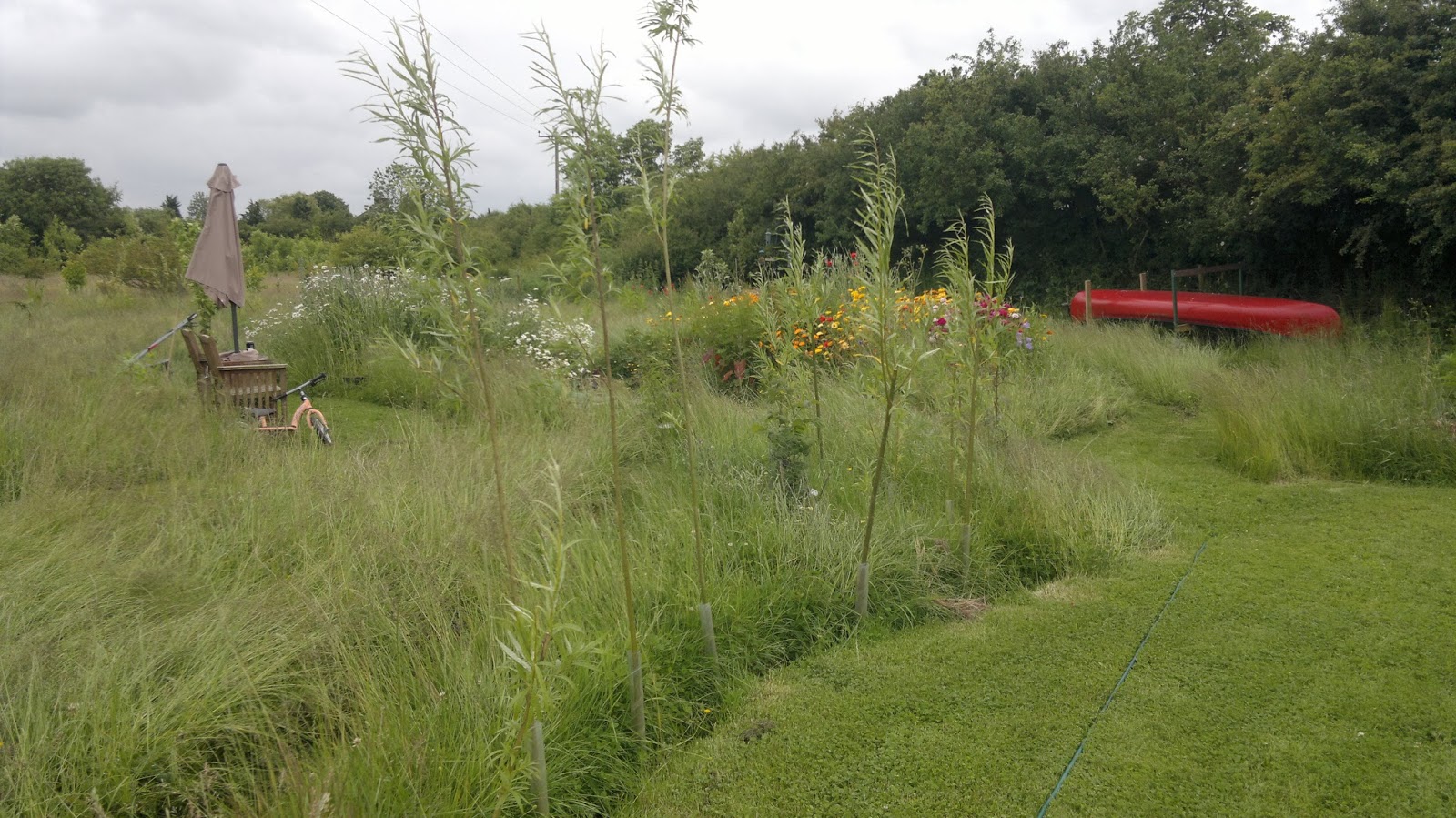Soil Testing
I have 2 Rhododendrons that I wanted to provide cover for the chickens at some stage and knowing that they like acidic soil I put a load of fire ash around one of them to see if it made a difference.
It did!
The Rhododendron is dying, slowly. The other one is doing OK, not putting on much growth, but happily sitting there.
I decided to do some tests on my soil, the manure and the fire ash. I mixed the samples with tap water and left to stand for a few hours.
Firstly I measured the tap water:
Tap water - 7.4 ph and 0.860 mS conductivity. The electrical conductivity was higher than normal (0.6 mS) but is about what I'd expect.
Fresh Horse Manure:
Fresh Manure - 8.6 ph 2.44 mS conductivity. The higher conductivity shows more salt. Not a good sign. This equates to about 1.2 PPT of NaCl (table salt per KG) which is a little too high.
Clay Soil:
Clay Soil - 7.0 to 7.2 ph 0.72 mS conductivity. Depending how well I mixed it the PH varied a little but it is what I expected. The conductivity level is similar to what I have recorded for other soils.
Wood Ash:
Wood Ash -10.5 to 12.7 ph 3.2 mS. The variable PH depended upon the probe touching the ash itself (12 PH) or just the water (10.5 PH). This surprised me! The PH is very high. That explains why the Rhododendron is dying. I made the mistake of thinking ash was acidic when it clearly isn't. Coal ash is probably what I was thinking of as being acidic. The conductivity levels are probably measuring the Calcium carbonate / potassium chloride etc.
Rain Water from Butt:
Rain Water: 5.6 ph 0.045 mS (45 uS) conductivity. This is virtually de-ionised water. I have been buying de-ionised water by the litre and I should have realised that I have the stuff for free in my water butts!
Well Rotted Horse Manure:
Manure - 8.3 ph 1.7 mS conductivity. The leaching of the salt can be seen caused by months of rain. This equates to about 0.85 PPT of NaCl which is a bit high but nothing to worry about.
6 month old horse manure in the beds:
Manure - 7.6 ph 0.95 mS conductivity. The conductivity reading was lower than I was expecting compared to the well rotted manure but this could simply be the variability in the manure. Different times of the year the horses are kept in more and have more wood saw dust and different feed and this bed was made from manure from horses outside and the fresh manure is from stabled horses. The well rotted manure could be a mixture. Also older batches of manure had more straw.
Conclusion:
The electrical conductivity readings for the fresh and well rotted manure were a little worrying as it suggests I have been adding too much salt to the soil but the measurement of the vegetable bed which is totally manure 1 foot deep put my mind at rest as the salt has leached away. The PH of the rain water is interesting as it is quite acidic and I now know to remove the wood ash from around the Rhododendron and hopefully it will recover.
I still have the problem of making the Rhododendron soil a bit more acidic if I can although the plant that I left alone is doing OK and perhaps it'll start growing this year since it only went in last early summer and perhaps it hadn't bedded in which was the cause of the slow growth. Buying some Sulphur looks like my best bet.




















